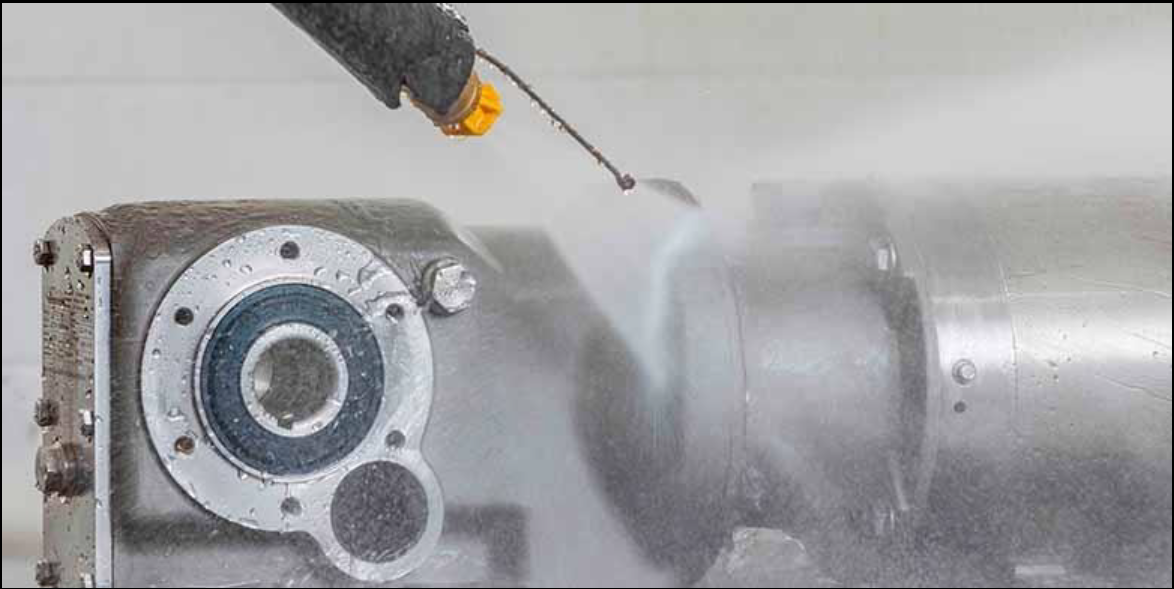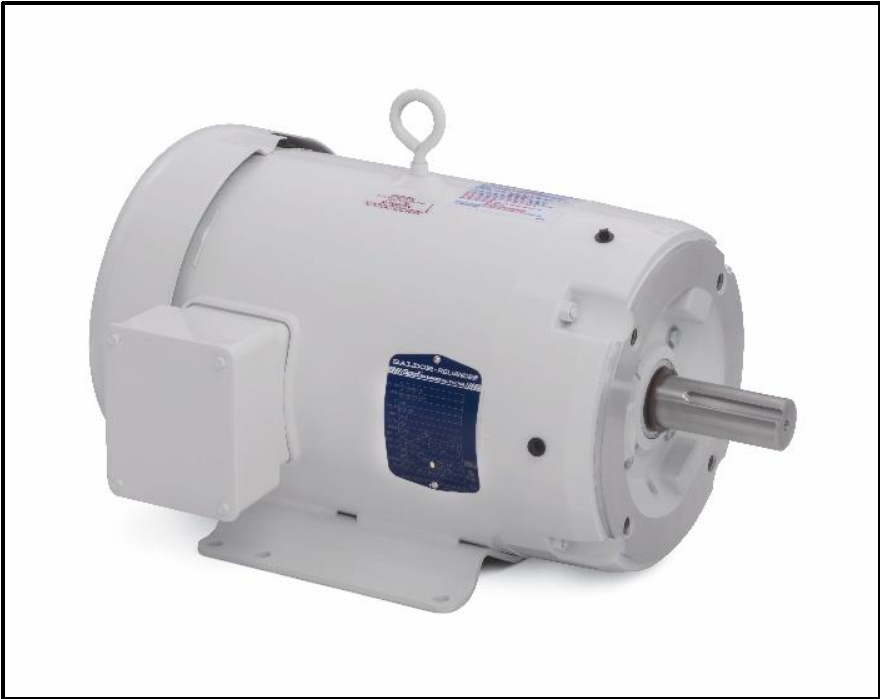How to protect your motors from high pressure washdowns
The use of high pressure washdowns to clean equipment is standard practice in many food and beverage facilities. However, when it comes to electric motors, this can present challenges. ABB’s Luciano Santos looks at what is needed to maintain hygiene without compromising on productivity or reliability.
Food production and hygiene are inseparable and handling equipment, preparation vessels and surfaces need to be kept scrupulously clean. This is typically done using chemicals and high pressure washdown, however cleaning in this way can present a challenge when it comes to machinery and powered equipment.
Electric motors are one such piece of equipment that are used throughout the modern food and beverage plant. With electrical components, cable glands, air vents and other points of ingress, they can present a major hurdle in the battle for hygiene.
This is because many traditional cleaning techniques are unsuitable for motors. Motors cannot, for instance, be easily dismantled for deep cleaning. Cleaning in place (CIP) is problematic as many industrial motors lack suitable ingress protection to resist water spray from high pressure hoses. Cleaning by hand or removing the machine for cleaning elsewhere are either time consuming, impractical or both.
One solution is to encase the motor in an enclosure or shroud, but shrouds can introduce their own problems. Crevices on the inside of a shroud can easily become contaminated with food particles, and cooling fans can suck in airborne contaminants, allowing food particles to act as a breeding ground for bacteria.
So, what should you look for when searching for a motor and drive that can be safely cleaned in place while not causing complications to productivity or reliability?
Waterproof designs
For any motor where hygiene is an issue, an essential element is a waterproof design. Here, it is the level of ingress protection that is the critical factor. Many motors offered for washdown regimes have IP66 protection, but IP69K, which protects against powerful, high temperature water jets, is better and essential for effective sealing.
Another essential feature is encapsulated windings, which ensure motors can last much longer than general purpose products in tough washdown conditions. The external surfaces of the motors should also be self-draining, with no crevices where particles can collect.
It is also important to protect VSDs from water if they are being used with a motor. The advantage here is that they can be installed some distance from the motor and application. They can also be housed in a protective cabinet, making it much easier to guard against corrosion and contaminants.
For example, a standard drive might only offer IP55 ingress protection which will be insufficient to withstand a high pressure washdown. However, it can be installed within a panel with IPx6 protection without affecting its performance, providing that care is taken to seal all possible entry points such as trunking, glands and cable entry systems.
Stainless steel motors
One answer to the challenge of washdown protection is to use stainless steel motors, which withstand washdown conditions without requiring protective shrouds. These are already very popular in North America, and other parts of the world are now catching on to their advantages.
The drawback is that the purchase cost of stainless-steel motors is higher than the more common cast-iron or aluminium motors. Yet food manufacturers increasingly recognise that stainless steel is the only way forward for washdown environments. Stainless steel has superior corrosion resistance and offers faster cleaning and far better longevity compared to other motor build materials.
As well as the resistance offered by the motor construction material itself, stainless steel motors should also be designed with surfaces that are self-draining. An example is the ABB IEC Food Safe motor, which has nameplate markings etched directly into the frame to avoid channels and ridges where contaminants can accumulate.
Corrosion resistance
If a company does want to go down the stainless-steel route, or the motor is in an area which does not experience high pressure washdowns, standard motors can be modified to meet the needs of many food applications.
An aluminium motor can be supplied without paint, eliminating the risk of paint chipping off. Instead, the aluminium surface is glass blasted, providing a smooth surface that is easy to wipe clean. This provides an ideal solution for applications such as freezers with controlled environments.
Grease and lubricants also play a role in corrosion resistance but again the needs of the Food and Beverage industry require special attention. H1 food grade grease lowers the risk of food contamination – EHEDG guidelines clearly promote the use H1 food grade lubricants in all applications in food processing areas.
Modern motors and drives are showing that they have what it takes to operate in Food and Beverage applications, providing the required hygiene levels to meet food standard legislation while offering high availability.
ABB (ABBN: SIX Swiss Ex) is a pioneering technology leader with a comprehensive offering for digital industries. With a history of innovation spanning more than 130 years, ABB is today a leader in digital industries with four customer-focused, globally leading businesses: Electrification, Industrial Automation, Motion, and Robotics & Discrete Automation, supported by its common ABB Ability™ digital platform. ABB’s market-leading Power Grids business will be divested to Hitachi in 2020. ABB operates in more than 100 countries with about 147,000 employees. www.abb.com


